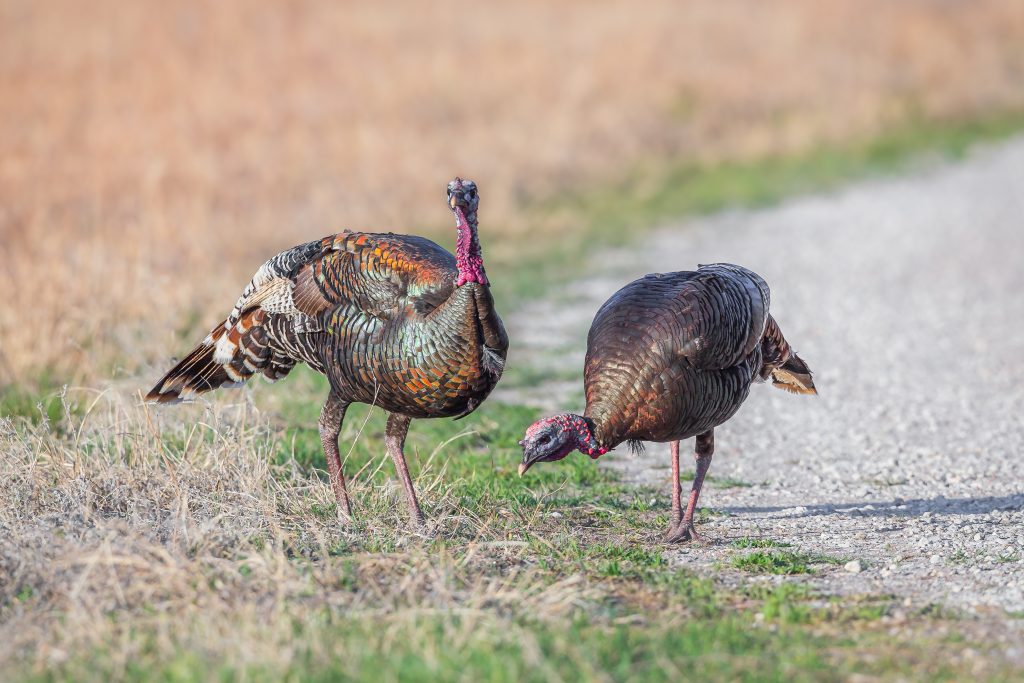Reimagine Food Plots for Year-Round Effect
Harvesting a bird in a food plot is great, but providing food throughout the year is the big-picture goal.
Food plots diversify forage options for wildlife, but food plots for turkeys are different than food plots for deer.
Jeff Lawson, a biologist for the Arkansas Game and Fish Commission’s new Private Lands Conservation Division, said that landowners are keenly interested in creating and improving habitat for wild turkeys. Food plots invariably enter the conversation.
“I tell them that for turkeys, they have to reimagine what a food plot is,” Lawson said.
The traditional image of a food plot is a large opening planted with grain-bearing grasses. They are great for attracting deer, but Lawson said that wild turkeys prefer unconventional style openings. Edge-type habitat is more attractive to turkeys than a cultivated field and creating that type of opening requires unconventional thinking
“Greenery along roadsides is very attractive to turkeys,” Lawson said. “A good road through a property can enhance all wildlife. Turkeys love roads, especially gravel roads where they can pick up grit. They love to be seen and to be able to see. When daylight hits those roads, it creates more opportunities for openings, and we see a lot of use out of that.”
Turkeys also gravitate to linear openings within well-managed forests. The two management practices are actually interdependent in an overall effort to provide nesting cover, brood- rearing cover and food.
“Food plots are supplemental to an overall habitat management plan, but with turkeys, having small, interspersed openings is important,” Lawson said. “Hens try to find managed openings to take poults and do brood rearing. There are a lot of studies that show hens taking poults to openings.”
Management techniques and strategies vary according to habitat type and terrain, Lawson said. Prairie areas respond very well to prescribed burning, for example. In the South and East, forest management practices combined with prescribed burning create environments where food plots can supply a tangible impact.
“Timber management and prescribed burning are key for the Southeast for both hardwoods and pine,” Lawson said. “An oak component is always helpful in winter. I like red oaks. Their small acorns will persist over time. White oaks will sour over two to four weeks, but red oaks will last a lot longer. The fat in small acorns will help turkeys get through the winter in good condition.”
To create supplemental food plots, Lawson recommends a mix of native vegetation along with various clovers and cereal grasses.

“I recommend planting cereal grasses like wheat or oats along with crimson clover and ladino clover,” Lawson said. “That mix is really good. I know folks that plant brown-top millet. Milo is a good one, too. There are some mixes that are designed for that.”
Those mixtures will help nourish turkeys through fall and winter, Lawson said. They also attract insects which are vital for adult turkeys and poults.
“Don’t overlook the native plants,” Lawson said. “They are super beneficial. When you’ve got a diverse mix of natives being managed in an opening, you’ve got year-round cover and food. The mixes we offer have 54 varied species of plants and six different grasses. The rest are wildflowers that climax during different parts of the growing season.”
These include pale purple coneflower, multiple coreopsis species and milkweeds. Milkweed has the added benefit of providing habitat for monarch butterflies, which Lawson said could be soon listed as federally threatened.
“These mixes are going to attract insects year-round,” Lawson said.
While a landowner must be vigilant against brushy encroachments into openings, Lawson said strategic tree plantings within openings can be highly beneficial to turkeys.
“Anytime you’ve got a food plot or an opening, a common practice is to plant a food tree,” Lawson said. “The red mulberry is going to create fruit from late May through July. That will attract every critter in the neighborhood, especially birds.”
To effectively reimagine a food plot, Lawson said a landowner must also reevaluate a food plot’s purpose. It can be a good place to harvest a gobbler, but its primary functions are to feed turkeys and provide essential habitat components.
Harvesting a bird is merely a reward for a landowner’s commitment.
